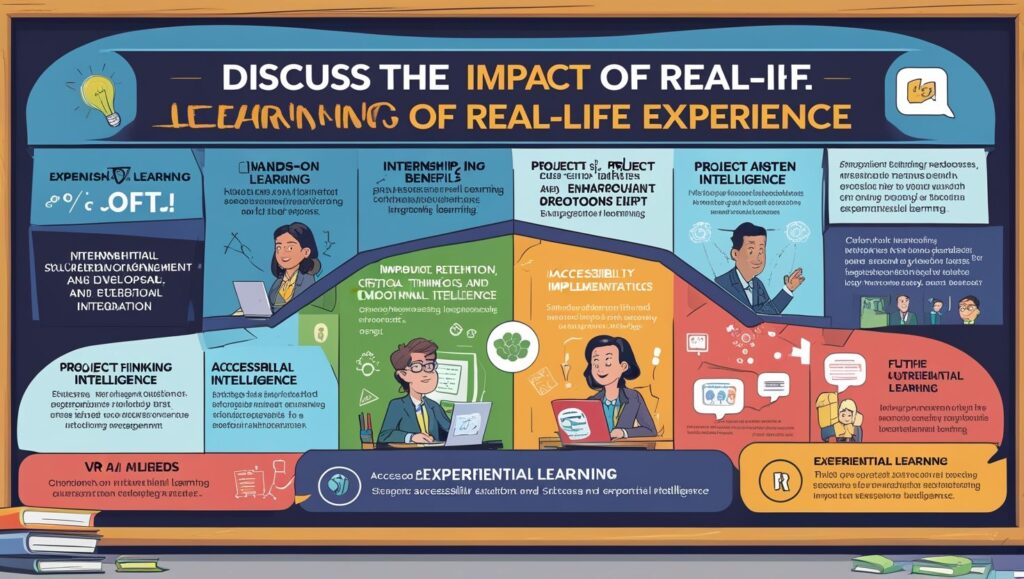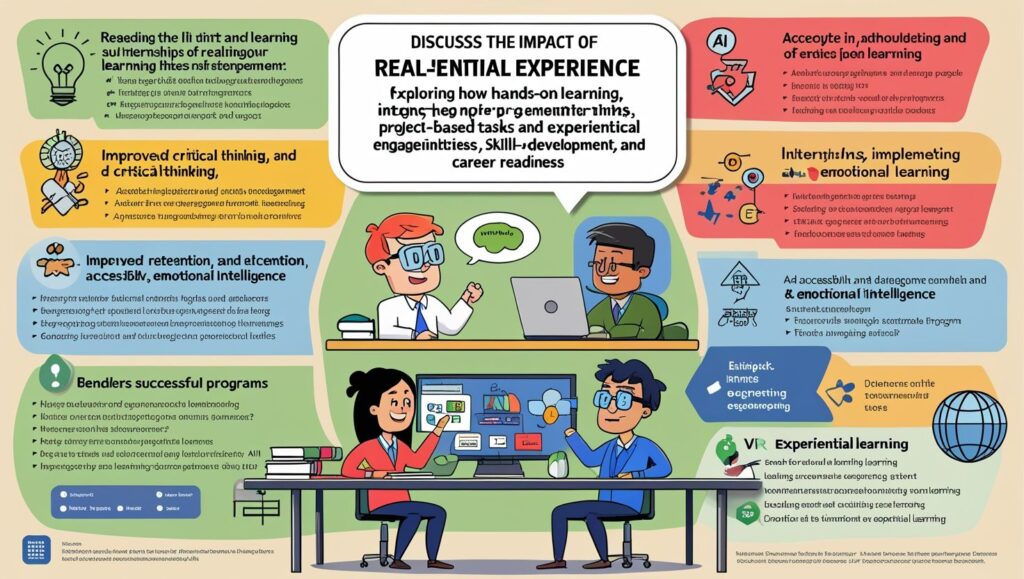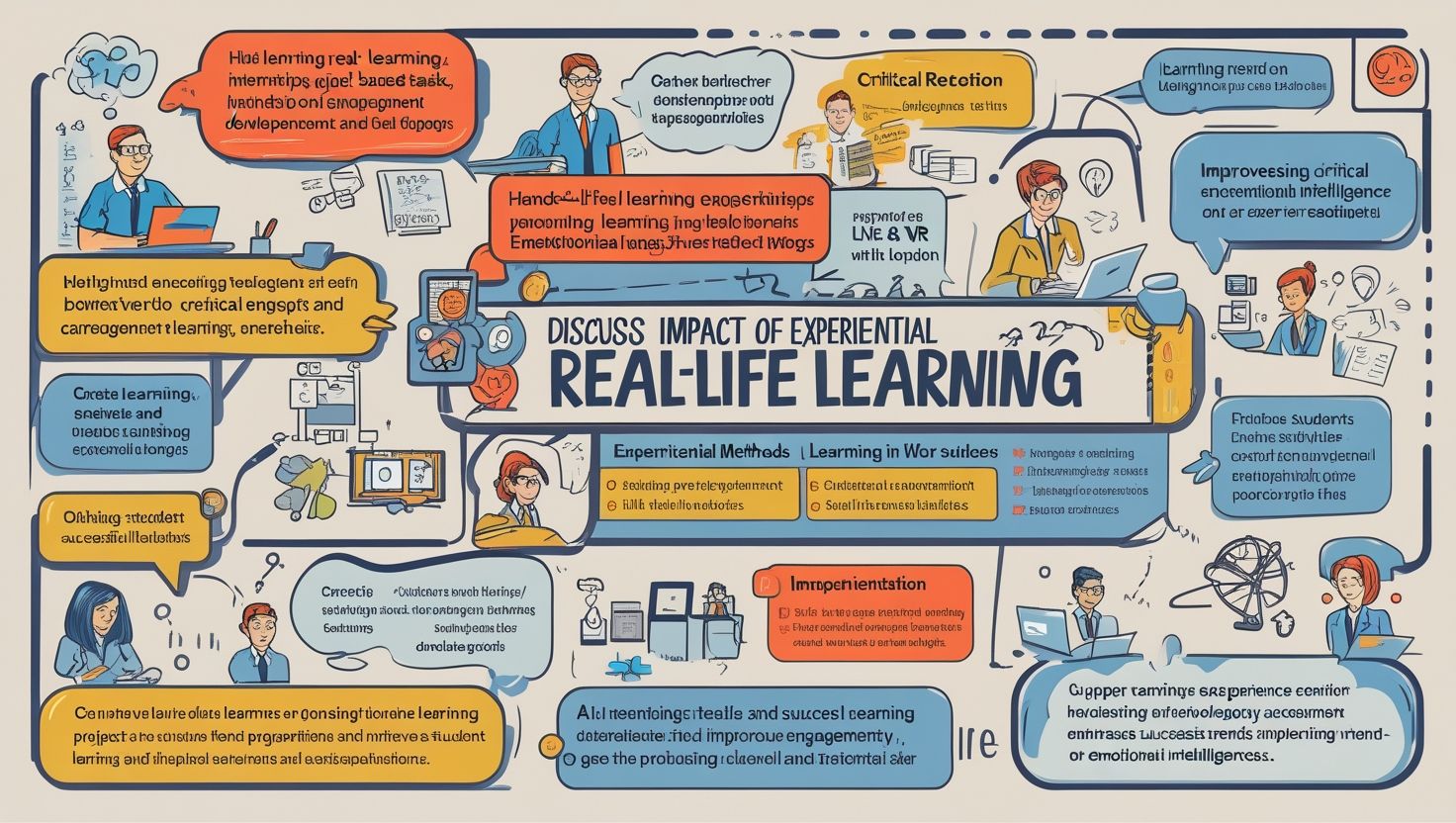Introduction
The Impact of Real-Life Experience in Education, Education has always been a cornerstone of human development, evolving over centuries to adapt to societal needs. In the modern era, there is a growing emphasis on integrating real-life experiences into education. Unlike traditional rote learning, which focuses on memorization, experiential learning bridges the gap between theory and practice. This approach enhances critical thinking, problem-solving skills, and emotional intelligence, preparing students for real-world challenges.
This article explores the impact of real-life experiences in education, discussing its benefits, challenges, and future implications. By examining case studies, expert opinions, and research findings, we will understand why hands-on learning is becoming indispensable in contemporary education systems.
The Concept of Experiential Learning
Experiential learning, as defined by educational theorist David Kolb, is the process of learning through experience. It involves a cycle of concrete experience, reflective observation, abstract conceptualization, and active experimentation. Unlike passive learning methods, experiential education encourages students to engage actively with the material, fostering deeper understanding and retention.
Types of Real-Life Learning Experiences
- Internships & Apprenticeships – Students work in professional settings to gain industry-specific skills.
- Service Learning – Combines community service with academic instruction.
- Project-Based Learning (PBL) – Students work on real-world projects to solve problems.
- Field Trips & Outdoor Education – Learning outside the classroom through exploration.
- Simulations & Role-Playing – Mimicking real-life scenarios for skill development.
Benefits of Real-Life Experience in Education
1. Enhances Retention and Understanding
Studies show that students retain only 5% of information from lectures but up to 75% when they learn by doing. Real-life experiences make abstract concepts tangible, helping students grasp complex subjects more effectively.
2. Develops Critical Thinking and Problem-Solving Skills
When students face real-world challenges, they learn to analyze situations, think creatively, and develop solutions. For example, engineering students who build prototypes gain hands-on problem-solving skills that textbooks alone cannot provide.
3. Improves Emotional and Social Intelligence
Collaborative projects and internships teach teamwork, communication, and leadership. Students learn empathy, adaptability, and conflict resolution—skills crucial for personal and professional success.
4. Prepares Students for the Workforce
Employers increasingly seek candidates with practical experience. Internships and apprenticeships provide students with industry exposure, making them job-ready upon graduation.
5. Increases Motivation and Engagement
Real-life learning makes education relevant. When students see the direct application of their knowledge, they become more motivated and invested in their learning journey.

Challenges in Implementing Experiential Learning
Despite its advantages, integrating real-life experiences into education presents several challenges:
1. Logistical and Financial Barriers
Organizing field trips, internships, and hands-on projects requires funding, resources, and partnerships with industries—factors that many institutions lack.
2. Standardization and Assessment Difficulties
Unlike traditional exams, experiential learning outcomes are harder to quantify. Developing standardized assessment methods remains a challenge.
3. Resistance to Change
Some educators and institutions are hesitant to shift from conventional teaching methods due to familiarity and curriculum constraints.
4. Accessibility and Inclusivity Issues
Not all students have equal access to internships or field experiences due to socioeconomic disparities. Ensuring inclusivity is crucial for equitable education.
Case Studies: Success Stories in Experiential Learning
1. Finland’s Phenomenon-Based Learning
Finland’s education system incorporates real-world projects where students tackle interdisciplinary problems, such as climate change or urban planning, enhancing practical knowledge.
2. Germany’s Dual Education System
Germany combines classroom education with vocational training, allowing students to gain hands-on experience in trades, engineering, and business while studying.
3. MIT’s “Maker” Culture
The Massachusetts Institute of Technology (MIT) encourages students to engage in hands-on projects, from robotics to sustainable design, fostering innovation.

The Future of Experiential Learning
As technology advances, experiential learning will evolve with:
- Virtual Reality (VR) and Augmented Reality (AR) – Simulating real-world environments for immersive learning.
- AI-Powered Personalized Learning – Adapting hands-on experiences based on individual student needs.
- Global Collaborative Projects – Students working on international real-world issues via digital platforms.
Conclusion
Real-life experiences in education transform passive learners into active participants, equipping them with skills necessary for the modern world. While challenges exist, the benefits far outweigh the drawbacks, making experiential learning a vital component of future education systems. Schools, policymakers, and industries must collaborate to integrate hands-on learning effectively, ensuring students are not just knowledgeable but also capable of applying their learning in real-world contexts.
By embracing experiential education, we can create a generation of innovative, adaptable, and emotionally intelligent individuals ready to tackle global challenges.

4 thoughts on “The Impact of Real-Life Experience in Education”
Comments are closed.